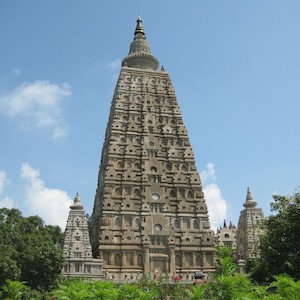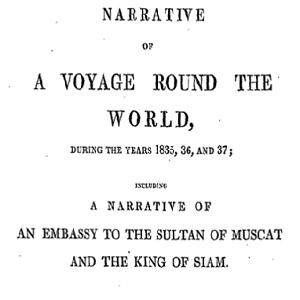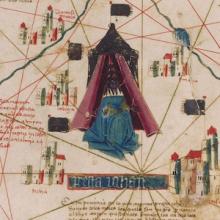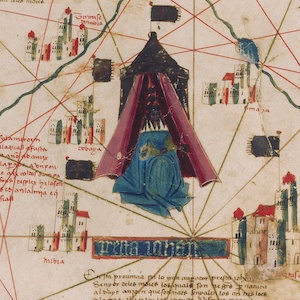Religion

Travel writing of al-Biruni, 11th century Persian scholar
This image is taken from a page of al-Biruni work called Chronology of an Ancient Nations. al-Biruni was a native of Iran. He was a prolific Persian scholar. While he published works in a wide variety of subjects, the majority of those works were on the subject of astronomy.

Mahabodhi Temple
This photograph shows the Mahabodhi Temple complex. The temple is a part of Bodh Gaya a religious place in the Gaya District in Bihar that is one of the four and most important pilgrimages associated with the life of Gautama Buddha.

Laws of Manu
The Manu-smriti, or Laws of Manu, are of the most authoritative codes of Hinduism in India, dating back to approximately 1
Mandate for Palestine
The Mandate for Palestine was a legal document that established the United Kingdom as a Mandatory in charge of Palestine and Tran

Memoir of William Ruschenberger
Dr. William Ruschenberger (d. 1895) was a United States Navy surgeon and was assigned to the USS Peacock, serving with Edmund Roberts as part of an American delegation representing the Jackson Administration to negotiate treaties with the Omani Empire and the Kingdom of Siam.

Short Teaching Module: Examining Early Genoese Voyages through Maps
The medieval Genoese ranged from China to the Atlantic, and their experience in navigation, the sugar industry, and the slave trade were the elemental foundation of Iberian colonial expansion.

Catalan Map of the World, c.1450
Dated to the mid-fifteenth century, this Catalan world map is over a meter in diameter on a sheet of vellum (high-quality parchment made of calfskin). Unlike many other surviving charts, this was not meant for practical navigation, though it was based on such nautical charts.

Calendar from Cham manuscript, early 20th century
An image of the Cham calendar from an early 20th century Cham manuscript. The column on the left and top row indicate measurements of months of the calendar drawn from the Islamic lunar calendar. Numerals written in Cham script in the middle are symbolic of the Cham Hindu solar calendar.
Ariya Cam Bini
Ariya Cam Bini is one of the few ariya that has little to no historical references in the poem. It is possible to deduce from the language of the poem and from the study of extant versions of the manuscript that its origins likely lie in the 19th century.
Short Teaching Module: Ariya Cam Bini, a 19th century Cham Poem
Ariya Cam Bini is a 19th–century epic poem written in the Austronesian Cham language of mainland Southeast Asia. The poem comes from the area called Pāṇḍuraṅga or Nâgar Cam, a pluralistic society in terms of culture, religion, and identity.